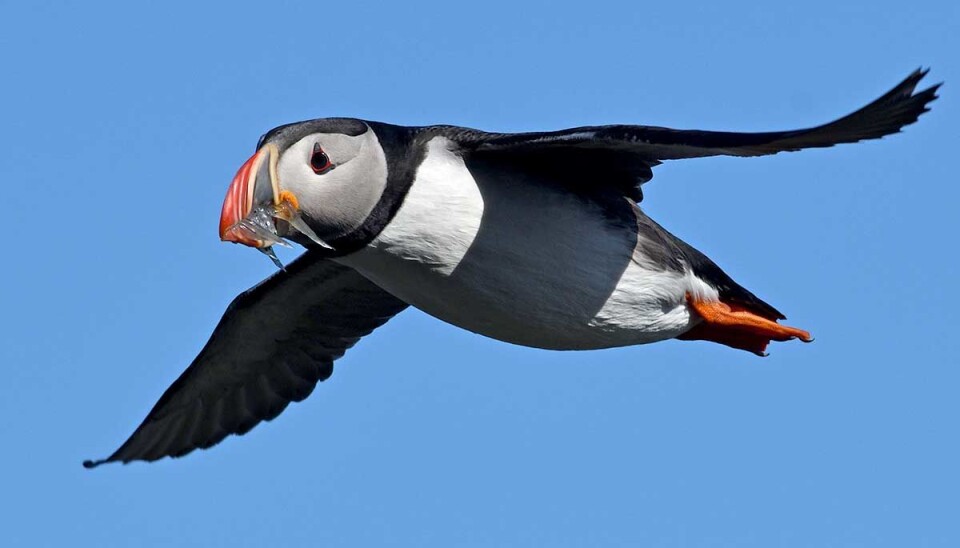THIS ARTICLE/PRESS RELEASE IS PAID FOR AND PRESENTED BY NINA - Norwegian Institute for Nature Research - read more

Seabirds ring the alarm on ocean warming
Changes in seabird breeding productivity reflect hemispheric differences in ocean warming and human use, and call out the need for policies that reduce the impacts of climate change on the world’s marine ecosystems.
Human activities affect ecosystems both directly and indirectly through anthropogenic climate change. The effects are however not evenly distributed across the globe.
The northern hemisphere is warming faster than its southern counterpart, and the marine ecosystems respond accordingly.
Researchers from every corner of the world have joined forces and analyzed long-term monitoring data from 66 seabird species, spanning a period of more than 50 years.
The study, published in Science on 28 May 2021, reveals that the asymmetry in sea temperature changes is reflected in the breeding success of seabirds. This makes seabirds an overarching and cost-efficient metric to assess marine ecosystem change, providing important insights for ecosystem monitoring and management.
“Our findings illustrate the critical role that seabirds play as sentinels of global marine change, and highlights the need for policies that reduce climate change impacts on the world’s marine ecosystems,” says William Sydeman, lead author and Chief Scientist at the Farallon Institute in California.

Seabirds as ecosystem sentinels
As canaries once warned coal miners about toxic gases, seabirds are one of the best early warning indicators of changes in marine ecosystems globally. Several aspects of their reproductive performance, which can be easily monitored at the breeding colonies, respond quickly to changes in the environment.
Declining productivity, i.e. the number of chicks produced per female per year, signals parallel decline in ocean health and changes in ecosystems across trophic levels that are difficult to observe directly.
Previous studies have proved that when the food available falls below one-third of the maximum amount recorded, the productivity decline, or fail altogether, regardless of species. Above this level, the number of chicks is unaffected by changes in food availability.
“These signals could easily be used to assess global change in marine ecosystems on an annual timeframe with relatively simple coordination and data sharing of governmental monitoring programs.”

Urgent in the north
The study found that fish-eating, surface-feeding seabirds in the northern hemisphere are most affected by ecosystem changes. Global climate models predict increasing ocean stratification cause by warming oceans.
This may limit the nutrient input in the water column, and consequently the production at all trophic levels as the marine food chains are inextricably connected. The decreasing productivity of seabirds across the north suggests that stratification may already be affecting marine ecosystems in the northern hemisphere.
“Our study indicates that the prognosis for sustained breeding productivity of many seabirds in the northern hemisphere is poor, unless availability of food resources is improved.”
The authors point to one obvious factor that needs continuous attention; the management of fisheries that target small pelagic fish or large zooplankton, competing with seabirds for limited food resources. Time-area fisheries closures may be an effective strategy for improving seabird productivity in the northern hemisphere.
Although the situation is less urgent in the south, the authors suggest establishment of large marine protected areas as a means to enhance seabird foraging opportunities and mitigating impending human impacts in the southern hemisphere.

The importance of long-term monitoring
Seabirds are at particular risk from ocean climate change, especially in combination with other human impacts as pollution and fisheries. Long-term monitoring is probably the best available method to acquire knowledge on the complexity of marine ecosystems, and essential for monitoring the health of the oceans.
The longest monitoring series included in the study is the Atlantic puffin study at the Røst archipelago in Norway, stretching all the way back to 1964.

“Sustaining these long-term monitoring programs is crucial. Global monitoring of seabird productivity enables detection of ecosystem change and contributes to understanding climate impacts on marine ecosystems,” says Tycho Anker-Nilssen, Senior Research Scientist at the Norwegian Institute for Nature Research (NINA), and in charge of the seabird monitoring at Røst.
“Many of these studies were initiated for other reasons but maintained because of the drastic changes they documented for an increasing number of seabird species and colonies. Those that managed to continue through many decades of shifting funding regimes constitute today our most valuable data sets for exploring the key drivers of change in seabird populations and how these are linked to variations in their main food chains. Such studies are of critical importance in the continued quest for a more ecosystem-based management of our marine resources.”
Reference:
William Sydeman et.al.: Hemispheric asymmetry in ocean change and the productivity of ecosystem sentinels. Science, 2021. (Summary)
See more content from NINA:
-
How will climate change affect lakes worldwide?
-
White-tailed sea eagles are breeding in Ireland again after more than a century
-
Could a tunnel help wild reindeer in Norway?
-
Norwegian white-tailed sea eagles are helping to rebuild a lost population in Ireland
-
1 in 4 freshwater species are at risk of extinction: "It's not too late to take action"
-
Insects prefer cold winters with lots of snow





































